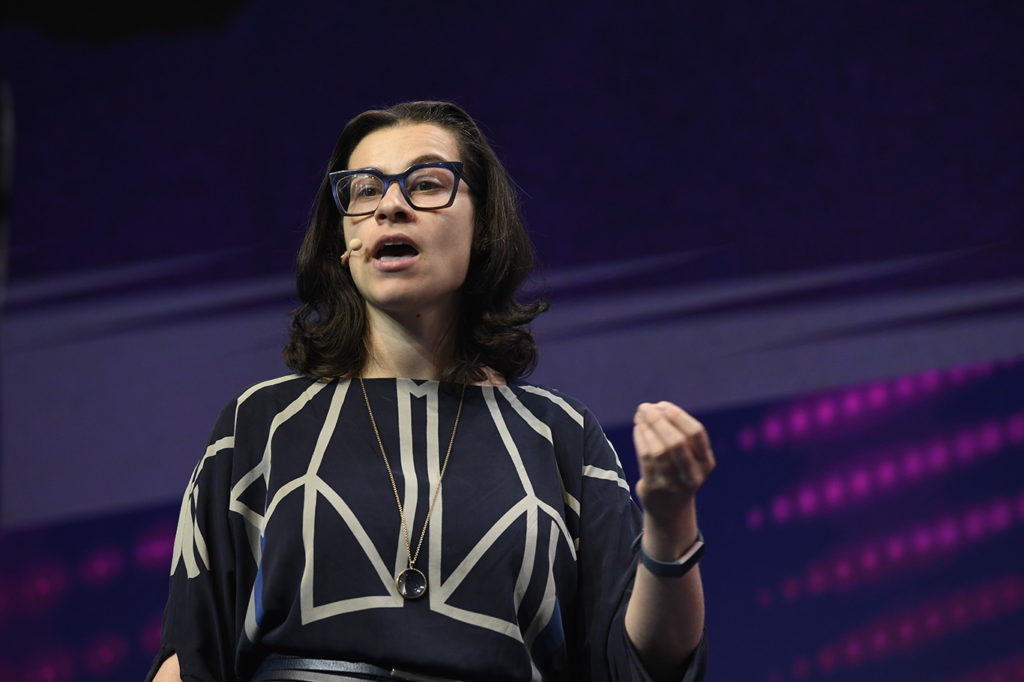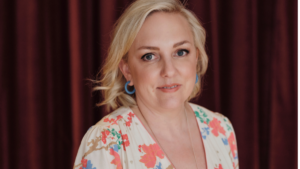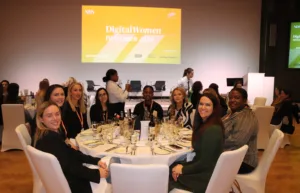NDA’s Digital Women series is talking to leaders from across our industry to understand the particular challenges, and opportunities faced by women. Next up is Anastasia Leng, CEO and Founder) of CreativeX.
What is the biggest opportunity for women in your sector of the digital industry today?
The biggest opportunity for women is to continue being vocal about their perspectives, which have, historically, been overlooked.
Take Pinterest as an example: When it first launched, investors couldn’t wrap their head around the fact that scrapbooking, or pinning, would be a mass behaviour, bucketing it instead as a niche female activity. That “niche female activity” is now enjoyed by 433 million people on a monthly basis. There are millions of ideas that have been ignored because the people who have historically been charged with evaluating them tend to skew towards a specific perspective and lens of looking at the world, typically one of a relatively affluent white male.
As the venture industry has evolved, women (and really anyone who’s been underrepresented in technology and business) have a larger-than-ever-before window to secure resources to build something that taps into the challenges and needs of their particular demographic, which, if Pinterest is any indication, could change the way millions of people go about their day. Female voices carry more power than ever before, and it’s important we use them to advocate for the things we care about.
Further, and irrespective of gender, there’s a great opportunity that lies in our ability to merge two seemingly disconnected disciplines into one. A vast 84% of marketing content is visual yet it’s the least understood and analysed element of the marketing mix despite the creative being the largest contributor to sales uplift (i.e., Nielsen, at 47%), yet creative and analytics teams continue to be thought of as mutually exclusive.
I believe those who start to fuse them together and learn to equally value these two seemingly disparate skill sets, by becoming creative analysts or analytical creatives, will be leading brands and marketing organisations a decade from now.
What is the biggest challenge to you as a woman in the digital industry and how are you overcoming it?
Starting a company is not for the faint- hearted. Starting a company as a woman came with challenges I didn’t foresee. I struggled to raise our first financing round and in my never-ending quest for more data, I made a spreadsheet where I kept meticulous track of every investor meeting in a structured way: how the introduction came about, what I said during those meetings, and even what I wore.
I learned that intros from folks who knew me professionally carried more weight than those who knew me socially, that being slightly combative in those first meetings was good, and that the more masculine I made myself look and sound (hair up, trousers, trainers, etc), the better I seemed to do.
Subconsciously, investors wanted to see traits of previously successful founders in me to help fuel their pattern recognition. It wasn’t conscious, and I certainly don’t think it was mal-intentioned; there are countless psychology experiments that demonstrate we make decisions based on existing pattern recognition.
However, I still never saw my sex as an impediment to being in business, until I decided to start a family. I was in the last stages of raising my Series A, and I told a partner at a VC firm that I was pregnant but would only take 4 weeks off, would be available during that time, and had the right support around me post-partum (my decision about my own maternity leave still fills me with a bit of shame as it’s certainly not something I would advocate to others, but at that time of our company’s journey, that’s what was required).
Despite that, the investor decided to pull out, citing concerns that they feared I wouldn’t want to return to work if I had a child; they almost couldn’t compute that I could simultaneously be a CEO and a mother.
I’m not the first woman to experience these challenges, and I certainly won’t be the last. That’s why I lean on the side of over-sharing, so that others who are in the earlier stages of the journey know they aren’t alone, and that often it’s not about them personally, but the work we have to do to change perceptions as a whole.
What three things could employer companies do to make the digital industry better for women?
The first is to recognise that people who make hiring and promotion decisions all come with unconscious biases. The more employers move to blind CV screening, for instance, or have a structured way of thinking about promotions, the more merit-based and less prone to bias our hiring and promotion decisions will be. This will help advance not only women, but really anyone who may not fit the traditional, or historical, mould of what a senior leader is meant to “look like.”
The second is work flexibility. People shouldn’t be constrained to the traditional 9-5, Monday to Friday way of working. I have always believed that we are more than what we do for a living, and at CreativeX, we implemented ‘Elevate Friday’: on Fridays, our team is encouraged to avoid day-to-day work, and to pursue something else that helps them create mind space. Some choose to use the day to take classes, while others train for a marathon, design dresses, or read.
It’s intended to be a day free from the regular constraints of daily work and it gives our team a real opportunity to step back, get some distance between themselves and the problems they’re working on. My view is simple: I believe happy people do better work. And being happy, at least to me, means making space to pursue other things that make me feel whole.
Finally, make your organisation more diverse, and not in the lip-service kind of way. I’m not just talking about hiring more women here; truly diverse teams may initially make you feel uncomfortable because you’ll have lots of people around you who see the world in a different way and those challenges to our point of view can be unsettling.
One of my former managers at Google once told me that the sign of a great manager is whether they can hire someone who’s different to them, not just on the surface but in the way they think. Shared values are important, but it’s necessary to recognise that we can share the same values but hold different opinions, and that diversity of thought will fortify a company’s ability to stay relevant while appealing to smart and curious people.
What support structures and organisations are most important and effective to you as a woman in the digital industry?
Mentorship is invaluable for me. Having people who are a couple of steps ahead and are very open about their journey makes it feel less lonely and intimidating. As a woman, I find the concept of “having it all” can be especially alienating, and it’s been both empowering and elucidating to see how other senior leaders contort themselves to juggle their various priorities. I
Many women still struggle with the fear that showing they care about something other than work (i.e., their family) at work will somehow negatively impact their career trajectory, so seeing people around you who are challenging some of our existing work moulds helps me pave the way for being closer to my true self at work.
Every month, through an association called ICE, I meet with seven other founders and CEOs who run fast growing scale ups. We treat our sessions like a board meeting, so everything is off the record, and we discuss work, family, and personal updates in a structured way. This has created an environment that’s rich in honesty, transparency, and support among a group of people who truly understand what it’s like to run a fast-growing company, and the knock-on effects that can have on those around you.
I wanted to bring a similar concept into CreativeX and have been toying around with a concept of “personal board meetings” for new managers: I’m hoping that by putting first-time managers in the same room in a closed-door, off-the-record setting, they’ll be able to openly share their challenges of managing people for the first time and build strong connections with others by being open about their shared experiences.
What is the biggest misconception about women and by women in the digital industry?
To be honest, I think the biggest misconception is that every woman is the same and we all want the same things. I find that any attempt to ascribe the same traits and behaviours to a very complex, nuanced, and diverse group of people is quite reductionist.
That aside, the working world also has this misconception, or perhaps this judgement, that emotion at work is a sign of weakness. I’ve been a CEO for almost a decade now, and in that time, I’ve seen both men and women cry “in my office,” yet it’s always the women who profusely apologise for it, both while they’re crying and for days afterwards, as though showing some raw emotion is some irreversible faux pas (men, in my experience, have rarely brought it up again).
I see it as the total opposite: to me, it’s a sign of deep care and trust, and I consider it a privilege when people share that side of themselves with me. We need to accept that we are all highly multi-dimensional creatures that have feelings about work, and that those feelings can and do translate to excelling at our jobs because they often signal a deep level of care and commitment to doing a job well.









